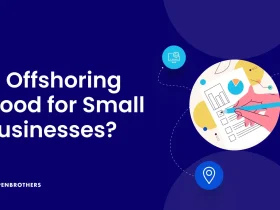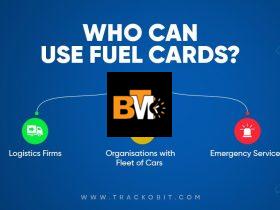The global employment landscape is undergoing a fundamental transformation that extends far beyond the temporary shifts experienced during recent global disruptions. Organizations worldwide, whether utilizing Employer of Record services to facilitate international expansion or managing global teams directly, are grappling with unprecedented changes in how, where, and when work gets done. These shifts represent not merely adaptations to current circumstances but evolutionary changes that are reshaping the very nature of employment relationships across borders and industries.
The convergence of technological advancement, changing workforce expectations, and economic pressures is creating new paradigms that challenge traditional employment models. From the rise of hybrid work arrangements to the increasing prevalence of artificial intelligence in the workplace, organizations must navigate these trends strategically to remain competitive in the global talent market while meeting the evolving needs of their workforce.
Hybrid Work Model Evolution
The hybrid work model has evolved from an emergency response to a strategic competitive advantage, fundamentally altering how organizations approach global expansion and talent management. This model, which combines remote work flexibility with intentional in-person collaboration, is reshaping not only where work happens but how organizations structure their global operations.
Organizations are discovering that hybrid models enable access to talent pools previously constrained by geographic limitations. Companies can now hire the best candidates regardless of their location, leading to more diverse and skilled teams. This geographic flexibility has become particularly valuable for roles requiring specialized skills that may be scarce in specific markets.
The evolution of hybrid work is driving significant changes in office space utilization and design. Organizations are transitioning from assigned seating to activity-based working environments that support different types of work activities. This shift requires careful consideration of cultural differences in workspace expectations and collaboration styles across different regions.
Technology infrastructure investments have become critical for supporting effective hybrid work models. Organizations must ensure that employees in all locations have access to reliable internet connectivity, appropriate hardware, and collaboration tools that enable seamless communication across time zones and cultural contexts.
Management practices are adapting to focus more on outcomes rather than presence, requiring new approaches to performance measurement, team building, and organizational culture development. This shift challenges traditional management hierarchies and requires leaders to develop new skills in remote team management and cross-cultural communication.
Gig Economy and Contract Work Growth
The gig economy continues to expand globally, with contract and freelance work becoming increasingly integrated into traditional employment structures. This trend is particularly pronounced in knowledge-based industries where specialized skills can be delivered remotely across international boundaries.
Organizations are developing sophisticated strategies for blending full-time employees with contract workers, creating flexible workforce models that can rapidly scale up or down based on business needs. This approach requires careful consideration of employment classification laws in different jurisdictions, as misclassification can result in significant legal and financial consequences.
Platform-based work is enabling individuals to access global opportunities while remaining in their home countries, creating new forms of international employment relationships. These arrangements often fall outside traditional employment law frameworks, requiring organizations to develop new approaches to worker protection and benefits provision.
The rise of specialized talent platforms is making it easier for organizations to access niche skills on a project basis, reducing the need to maintain large in-house teams for specialized functions. This trend is particularly relevant for organizations expanding into new markets where local expertise may be required temporarily.
Legal and regulatory frameworks are evolving to address the unique challenges of gig work, with different jurisdictions taking varying approaches to worker classification, benefits provision, and taxation. Organizations must stay current with these developments to ensure compliance across all markets where they engage contract workers.
AI and Automation Impact on Jobs
Artificial intelligence and automation technologies are reshaping job roles and skill requirements across industries, creating both opportunities and challenges for global employment strategies. The impact varies significantly by industry, role type, and geographic region, requiring nuanced approaches to workforce planning and development.
Job displacement concerns are balanced by job creation in new categories, particularly in AI development, data analysis, and human-AI collaboration roles. Organizations must proactively identify which roles may be affected by automation and develop reskilling programs to help employees transition to new responsibilities.
The implementation of AI tools is augmenting human capabilities rather than simply replacing workers in many cases. This human-AI collaboration model requires new skills in prompt engineering, AI tool utilization, and interpreting AI-generated insights. Training programs must evolve to prepare workers for these hybrid work environments.
Geographic variations in AI adoption rates and regulatory approaches create complex considerations for global employers. Some regions are embracing AI technologies more rapidly than others, leading to productivity disparities that must be managed carefully to maintain team cohesion and fair compensation practices.
Ethical considerations around AI use in employment decisions, performance monitoring, and workplace automation require careful policy development and ongoing monitoring. Organizations must balance efficiency gains with employee privacy rights and ensure that AI systems don’t perpetuate bias or discrimination.
Skills Gap Challenges Globally
The rapid pace of technological change is creating significant skills gaps in many industries and regions, making talent acquisition and development critical competitive advantages. These gaps vary by location, creating opportunities for organizations that can effectively identify and develop needed skills.
Technical skills in areas such as cybersecurity, data science, cloud computing, and digital marketing are in high demand globally, often commanding premium compensation packages. Organizations must develop competitive strategies for attracting and retaining talent with these skills.
Soft skills are becoming increasingly important as automation handles more routine tasks, leaving humans to focus on creative problem-solving, emotional intelligence, and complex communication. These skills are particularly crucial in global organizations where cross-cultural collaboration is essential.
Upskilling and reskilling programs are becoming essential investments for organizations seeking to bridge skills gaps internally rather than relying solely on external hiring. These programs must be tailored to different learning styles and cultural contexts to be effective across global teams.
Partnerships with educational institutions and training providers are helping organizations develop talent pipelines while contributing to broader economic development in their operating regions. These partnerships often provide mutual benefits through curriculum development input and intern placement programs.
Generational Workforce Differences
The modern workforce spans multiple generations, each with distinct expectations, communication preferences, and career development priorities. Managing these differences effectively across global markets requires sophisticated understanding of both generational and cultural factors.
Generation Z employees are entering the workforce with high expectations for technology, flexibility, and purpose-driven work. They often prioritize work-life integration over traditional career advancement paths and expect transparent communication about organizational values and social impact.
Millennial workers, now in leadership positions, are driving demand for flexible work arrangements, professional development opportunities, and organizations that align with their values. They often serve as bridges between older and younger generations in the workplace.
Generation X professionals bring stability and institutional knowledge while adapting to new technologies and work arrangements. They often serve as mentors and change agents in organizations undergoing digital transformation.
Baby Boomers remaining in the workforce contribute valuable experience and institutional knowledge while adapting to new collaboration tools and work arrangements. Organizations must ensure that knowledge transfer occurs effectively as this generation transitions to retirement.
Cross-cultural variations in generational characteristics add complexity to global workforce management, as cultural values interact with generational preferences to create unique workplace expectations in different regions.
Sustainability and Corporate Responsibility
Environmental, social, and governance (ESG) considerations are becoming increasingly important factors in employment decisions and organizational reputation. Employees, particularly younger generations, are choosing employers based on their commitment to sustainability and social responsibility.
Climate change initiatives are influencing workplace policies, from reducing business travel through virtual collaboration to implementing carbon offset programs for employee commuting. Organizations must balance operational efficiency with environmental commitments across all markets.
Social responsibility extends to employment practices, including fair compensation, diversity and inclusion initiatives, and community engagement. These commitments must be authentic and consistently applied across all geographic markets to maintain credibility.
Supply chain responsibility is extending to employment practices of vendors and partners, requiring organizations to ensure that their global operations meet high standards for worker treatment and environmental protection throughout their value chains.
Reporting and transparency requirements are increasing, with stakeholders expecting detailed information about employment practices, diversity metrics, and environmental impact. Organizations must develop systems to collect and report this information consistently across global operations.
Technology’s Role in HR Transformation
Human resources technology is evolving rapidly, enabling new approaches to talent management, employee engagement, and organizational development across global operations. These tools are becoming essential for managing distributed teams effectively.
Artificial intelligence in HR is automating routine tasks while providing insights into employee engagement, performance patterns, and retention risks. These tools must be implemented carefully to ensure bias-free decision-making and maintain employee privacy.
Employee experience platforms are creating personalized, consumer-grade experiences for HR interactions, from onboarding to performance management. These platforms must be adaptable to different cultural contexts and regulatory requirements.
Analytics and data-driven decision-making are becoming standard practices in HR, enabling organizations to identify trends, predict outcomes, and optimize employment strategies. The challenge lies in ensuring data quality and maintaining privacy compliance across jurisdictions.
Virtual and augmented reality technologies are enhancing training programs and enabling immersive onboarding experiences that can be delivered consistently across global locations. These technologies are particularly valuable for safety training and complex skill development.
Conclusion: Preparing for the Future of Global Employment
The future of work is being shaped by forces that require proactive adaptation rather than reactive responses. Organizations that successfully navigate these trends will build competitive advantages through enhanced talent attraction, improved operational efficiency, and stronger employee engagement across global markets.
Success in this evolving landscape requires organizations to embrace flexibility while maintaining consistency in core values and employment standards. The challenge lies in balancing global standardization with local adaptation, ensuring that employment practices meet diverse workforce expectations while maintaining operational coherence.
The investment in understanding and adapting to these trends will determine which organizations thrive in the future global economy. Those that view change as opportunity rather than disruption will be best positioned to attract top talent, maintain competitive advantages, and build sustainable growth across international markets.









Leave a Reply